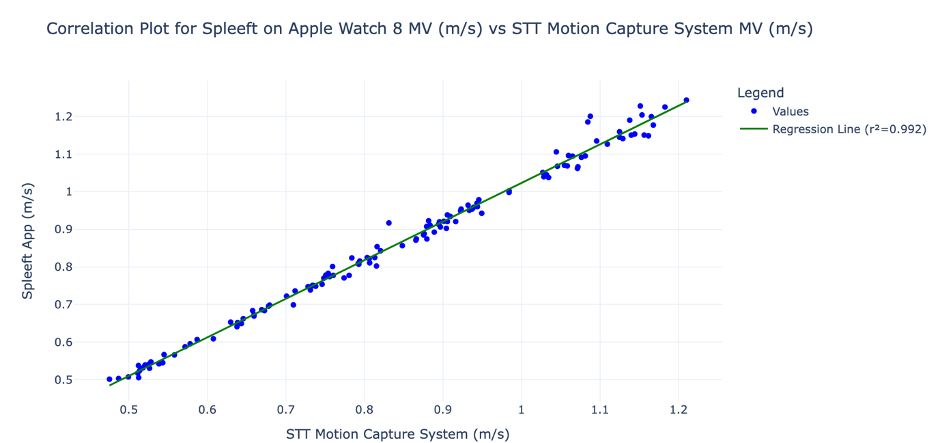Some weeks ago, we published a proof white paper which explaining everything about our algorithm, the technology behind it and lots of data proving why you should trust measurements. The aim of this blog is to summarize the key findings of this study. You can download the full paper and the raw data here.
We conducted three different tests against three different technologies: squats test against the Vitruve LPT (linear position transducer) and lunges test against the STT System Motion Capture System (MOCAP), performed by us. Our collage in China, Zijuin Ge, performed a bench press test against the Gymaware LPT by himself.
We measure the range of motion, mean velocity and peak velocity. Now we will talk about the mean velocity, but you can access the other data at the white paper.
DOWNLOAD SPLEEFT APP NOW FOR PHONE, MAC AND WATCH!
Validity & Reliability Spleeft — With Your Apple Watch And iPhone
Which is the mean error of the app?
A very high correlation (r > 0.98) was found when comparing Spleeft against the other technologies. However, the mean error varies between devices.

Against Vitruve and the MOCAP, the lowest error was 0.016 m/s of the Apple Watch 8. The highest was 0.03 m/s of the iPhone 7. The Bland – Altman proved the validity of this devices, as no systematic errors where found.

A systematic error was found against Gymaware. We are trying to understand these difference, because these errors were not found against Vitruve or the MOCAP. The systematic bias is very clear, so we hypothesize that it relies on the algorithm behind Gymaware. Maybe the horizontal-axes correction.

How about the reliability?
A very low coefficient of variation (CV) was found when comparing three devices against Vitruve (1.67%). The same happened for the MOCAP (1.71%) and the Gymaware (4.2%). Considering very accurate a CV less than a 6%, it’s clear that Spleeft was found reliable against all the devices.
We could say that Spleeft is valid and reliable against Vitruve and the MOCAP. Against Gymaware, is not valid but reliable, as the error is systematic and the CV very low.
Can we compare measurements taken from different devices?
No significant different where found between the three different devices when performing the squats test with: iPhone 7 with the old algorithm, Apple Watch SE (both taking 100Hz data) and an Apple Watch 8 (200 Hz measurements). Also, as mentioned above, the CV is very low. This is very important for coaches who can import data from multiple athletes into their Mac app. You can compare data between different sources.
Also, we proved that it is not necessary the most expensive device (Apple Watch 8 or newer) to measure barbell velocity with accuracy. As you will see in the white paper, the 200 Hz measurements were better just to avoid some random errors at the range of motion in high-speed movements. But no difference in the user experience is expected.




